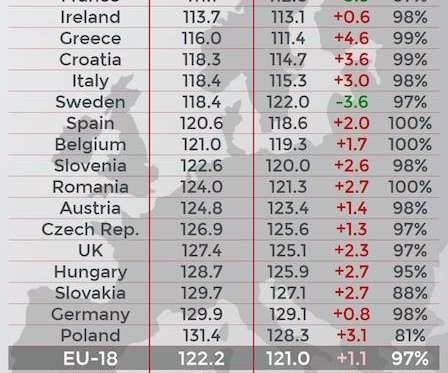New report finds global CO2 vehicle emission reduction measures falter; dropping diesels, increasing SUVs
Green Car Congress
MARCH 21, 2019
Average new LDV fuel economy (liters gasoline equivalent per 100 km (L ge /100 km) by country or region (2005-17) and new registrations (2017). A total of 27 countries—including Sweden, Canada and the United Kingdom—saw the fuel economy of their fleets stagnate or worsen from 2015 to 2017. Source: GFEI. L ge /100 km.

















Let's personalize your content